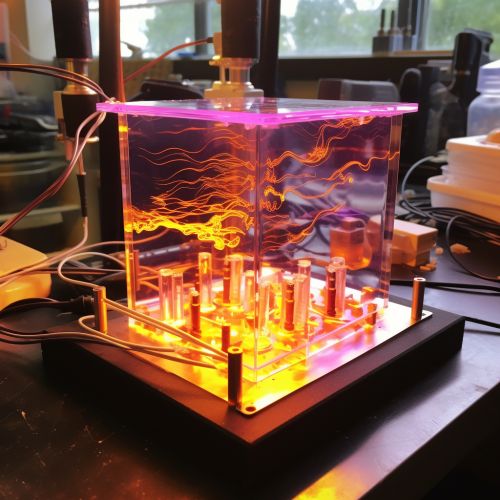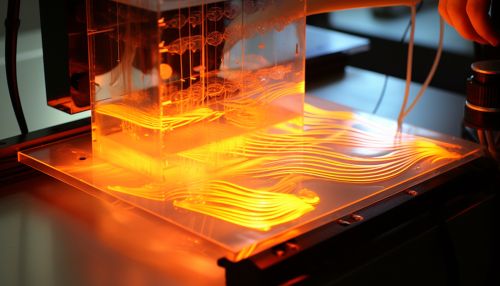Proteomics
Overview
Proteomics is a branch of Molecular biology that studies proteins, their structures, and their functions. It is an in-depth study of the entire set of proteins produced or modified by an organism or system. This field of study has grown significantly with the development of mass spectrometry and bioinformatics, which are essential for the large-scale analysis of proteins.


History
The term "proteomics" was first coined in 1997 to make an analogy with genomics. While genomics is the study of DNA, proteomics focuses on proteins. The study of proteins is not new, but the term "proteomics" has come to represent the large-scale experimental analysis of proteins and proteomes.
Proteomes
A proteome is the entire set of proteins that is produced or modified by an organism or system at a given time. Proteomes can vary from cell to cell and at different times within the same cell. The complexity of proteomes can be quite vast, as a single gene can produce multiple different proteins through processes like alternative splicing and post-translational modification.


Techniques in Proteomics
Proteomics relies on methodologies to analyze proteins on a large scale. These methodologies include:
Mass Spectrometry
Mass spectrometry is a technique used to identify and quantify proteins in complex mixtures. It can provide information about the molecular weight of proteins, their amino acid composition, and their post-translational modifications.
Two-Dimensional Gel Electrophoresis
Two-dimensional gel electrophoresis is a technique used to separate proteins based on their isoelectric point and molecular weight. This technique allows for the visualization of a large number of proteins on a single gel.


Chromatography
Chromatography is a method used to separate proteins based on their physical and chemical properties. This technique is often used in conjunction with mass spectrometry to analyze complex protein mixtures.
Applications of Proteomics
Proteomics has a wide range of applications in various fields such as:
Medicine
In medicine, proteomics is used to identify potential new drugs, understand disease mechanisms, and develop personalized medicine. It is also used in the study of biomarkers for disease diagnosis and prognosis.
Agriculture
In agriculture, proteomics can be used to improve crop yield, disease resistance, and nutritional value. It can also be used to understand the effects of environmental stress on plants.
Environmental Science
In environmental science, proteomics is used to study the effects of pollutants on organisms and ecosystems. It can also be used to monitor environmental changes and their impact on biodiversity.


Challenges and Future Directions
Despite its many applications, proteomics faces several challenges. These include the complexity of proteomes, the dynamic nature of proteins, and the difficulty in detecting low-abundance proteins. Additionally, the interpretation of proteomics data can be challenging due to the large amount of data generated.
Future directions in proteomics include the development of new technologies and methodologies to overcome these challenges. There is also a growing interest in integrating proteomics with other 'omics' technologies such as genomics and metabolomics to gain a more comprehensive understanding of biological systems.
